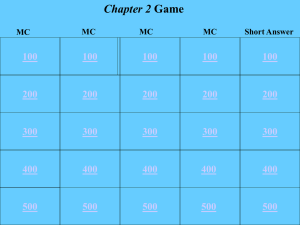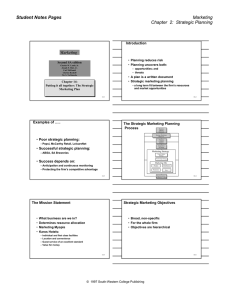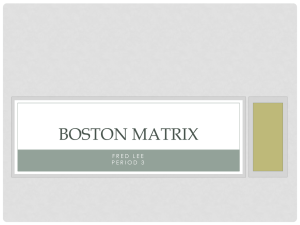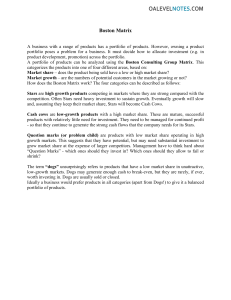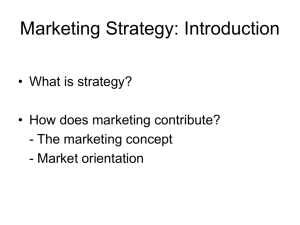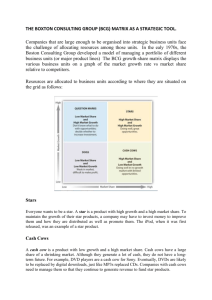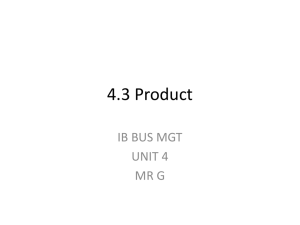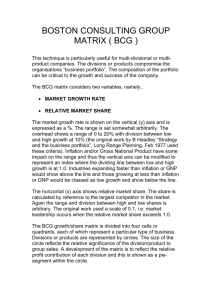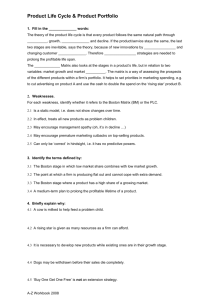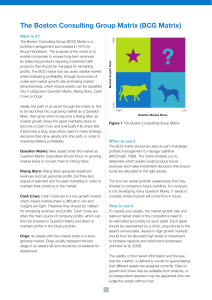BCG Matrix - Hale
advertisement
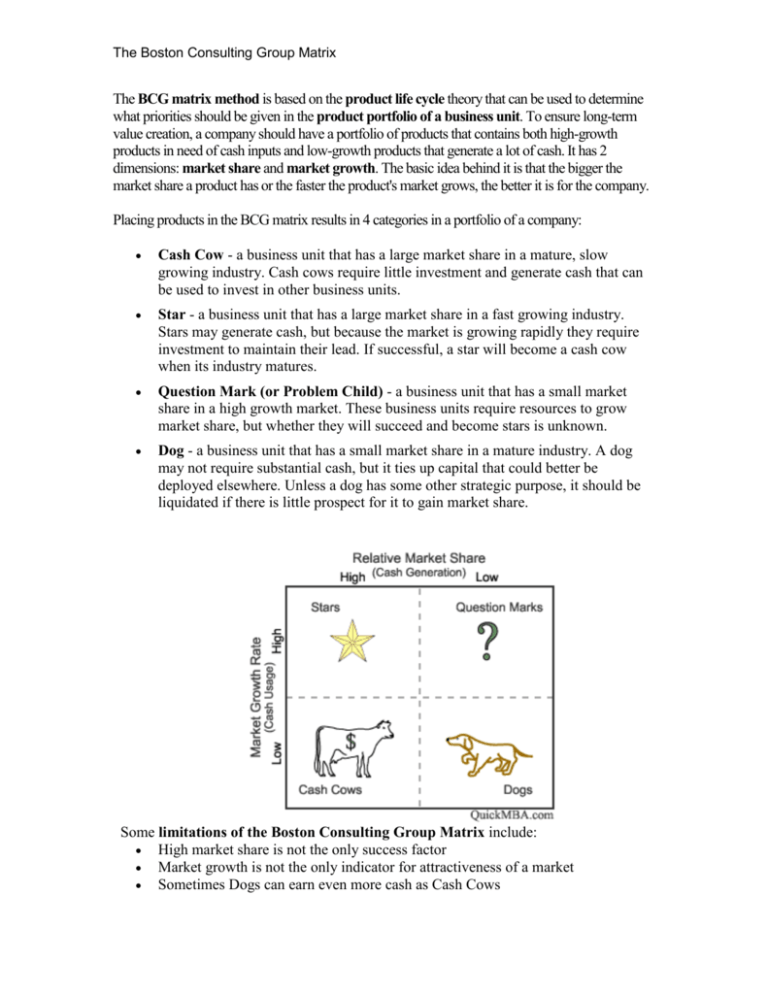
The Boston Consulting Group Matrix The BCG matrix method is based on the product life cycle theory that can be used to determine what priorities should be given in the product portfolio of a business unit. To ensure long-term value creation, a company should have a portfolio of products that contains both high-growth products in need of cash inputs and low-growth products that generate a lot of cash. It has 2 dimensions: market share and market growth. The basic idea behind it is that the bigger the market share a product has or the faster the product's market grows, the better it is for the company. Placing products in the BCG matrix results in 4 categories in a portfolio of a company: Cash Cow - a business unit that has a large market share in a mature, slow growing industry. Cash cows require little investment and generate cash that can be used to invest in other business units. Star - a business unit that has a large market share in a fast growing industry. Stars may generate cash, but because the market is growing rapidly they require investment to maintain their lead. If successful, a star will become a cash cow when its industry matures. Question Mark (or Problem Child) - a business unit that has a small market share in a high growth market. These business units require resources to grow market share, but whether they will succeed and become stars is unknown. Dog - a business unit that has a small market share in a mature industry. A dog may not require substantial cash, but it ties up capital that could better be deployed elsewhere. Unless a dog has some other strategic purpose, it should be liquidated if there is little prospect for it to gain market share. Some limitations of the Boston Consulting Group Matrix include: High market share is not the only success factor Market growth is not the only indicator for attractiveness of a market Sometimes Dogs can earn even more cash as Cash Cows The Boston Consulting Group Matrix The BCG Matrix method can help understand a frequently made strategy mistake: having a one-size-fits-all-approach to strategy, such as a generic growth target (9 percent per year) or a generic return on capital of say 9.5% for an entire corporation. In such a scenario: A. Cash Cows Business Units will beat their profit target easily; their management have an easy job and are often praised anyhow. Even worse, they are often allowed to reinvest substantial cash amounts in their businesses which are mature and not growing anymore. B. Dogs Business Units fight an impossible battle and, even worse, investments are made now and then in hopeless attempts to 'turn the business around'. C. As a result (all) Question Marks and Stars Business Units get mediocre size investment funds. In this way they are unable to ever become cash cows. These inadequate invested sums of money are a waste of money. Either these SBUs should receive enough investment funds to enable them to achieve a real market dominance and become a cash cow (or star), or otherwise companies are advised to disinvest and try to get whatever possible cash out of the question marks that were not selected.
